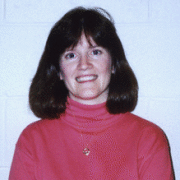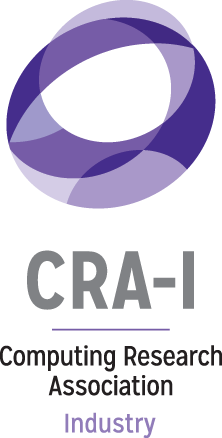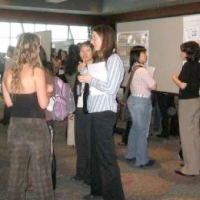Highlight on DMP Alum Eileen Kraemer
Originally Posted in Summer/Fall 2008 Newsletter
 Eileen Kraemer is a Professor and the Head of the Computer Science Department at the University of Georgia. Her research interests are in visualization and interaction to support users engaged in complex tasks, such as the design and maintenance of concurrent software and the use of biological databases and analysis tools. She earned a BS in Biology from Hofstra University in Hempstead, NY, and then studied Computer Science, earning an MS from Polytechnic University in Brooklyn, NY and a PhD from Georgia Tech’s College of Computing. Prior to joining the faculty at UGA, she was an Assistant Professor at Washington University in St. Louis. You can learn more about Eileen.
Eileen Kraemer is a Professor and the Head of the Computer Science Department at the University of Georgia. Her research interests are in visualization and interaction to support users engaged in complex tasks, such as the design and maintenance of concurrent software and the use of biological databases and analysis tools. She earned a BS in Biology from Hofstra University in Hempstead, NY, and then studied Computer Science, earning an MS from Polytechnic University in Brooklyn, NY and a PhD from Georgia Tech’s College of Computing. Prior to joining the faculty at UGA, she was an Assistant Professor at Washington University in St. Louis. You can learn more about Eileen.
Q: How did you become interested in visualization and interaction?
Prior to returning to grad school, I taught high school biology, chemistry, and physics. My experiences as a teacher taught me just how important it is to present people with the right abstraction, model, or example to convey a complex concept, and that allowing learners to construct or interact with their own model or abstraction is critical to helping learners understand new ideas and “make them their own.” I began my grad studies at Georgia Tech with the intention of pursuing a Ph.D. in systems, and initially focused my studies on operating systems, distributed systems, and parallel processing. At the same time I started at Tech, John Stasko joined the department as a new assistant professor. I began to work with him on the visualization of parallel and distributed systems, which led to the development of POLKA (a system that supports the visualization of concurrency), and the Animation Choreographer, which calculates various allowable orderings of events in a parallel or distributed system and then drives a visualization that adheres to the selected ordering. These visualizations would be useful for those who design, maintain, or tune the performance of parallel or distributed software, and that different orderings would be useful for different tasks.
As an assistant professor at Washington University in St. Louis, I extended these ideas to include consistent steering (online modification) of parallel and distributed systems, using ideas borrowed from Richard Fujimoto’s work with optimistic simulation, another interest of mine.
Q: How can your work be applied in practice?
In bioinformatics, I work with the EuPathDB group, located at UGA and at the University of Pennsylvania. EuPathDB is a portal for accessing data associated with eukaryotic pathogens that cause diseases such as malaria, cryptosporidosis, and toxoplasmosis. I work with the user interface group to run user studies to refine the web site so that users can more easily perform complex tasks such as issuing a series of queries and then combining the results in complex ways.
In my work with software engineering diagrams for con- currency, I work with Laurie Dillon and Kurt Stirewalt at Michigan State. Along with our graduate students, we’ve designed some refinements of UML, which we term saUML (synchronization adorned UML), that we’ve recently shown provide significant benefits for students in the comprehension of synchronization and concurrency. We’ve also been working to develop a task model for the maintenance of concurrent software, and hope to use this as a guide for the development of tools that better support the maintenance task for concurrent software.
Q: When did you become Department Head?
I became Head on July 1 of this year.
Q: What’s the most difficult aspect of your career right now?
Being Department Head presents new challenges: dealing with budget cuts, handling promotion and tenure cases, and trying to allocate resources to maximize the benefit to my department. Also, I’m trying to figure out how to be a good Head and still maintain my research program.
Q: What do you enjoy most about your career right now?
I always enjoy teaching and working with graduate students. Learning to manage the department, to make plans for the department’s future, and to carry out those plans is an exciting challenge.
Q: How has your interaction with CRA-W impacted your career?
CRA-W programs have been there to help me at every step along the way. As a student, I attended the CRA-W Workshop on Academic Careers for Women (twice!), found inspiration in the people I met, and benefited from knowing the community of women in CS. As a new Assistant Professor, I again participated in the Workshop on Academic Careers, and gave talks on my experiences in “Finding a Job” and “First Year Surprises.” More recently, I had the opportunity to participate in the CAPP (Now known as Mid – CMW), where I received good advice on building negotiation and management skills, and some coaching on making the Associate to Full Professor transition. I was able to put some of those skills to work immediately, and all were helpful. I hope that I’m able to give back as much to the community as CRA-W and its programs have given to me.






